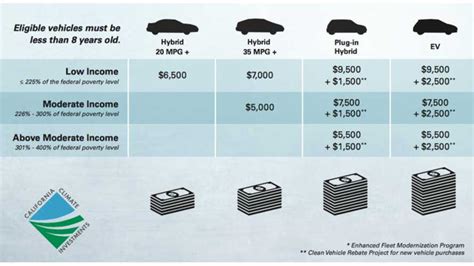Unlocking Savings: How California’s Rebate Program is Making Electric Cars More Accessible
As the world shifts toward more sustainable transportation solutions, electric vehicles (EVs) are becoming increasingly popular. California, known for leading environmental initiatives, has rolled out a robust rebate program aimed at making EVs more accessible to its residents. This article explores the details of California’s rebate program, the potential for savings, and how it is contributing to a greener future.
The Need for Electric Vehicles
With climate change presenting a significant threat, the demand for eco-friendly alternatives to gas-powered vehicles has escalated. Electric vehicles offer substantial benefits, including reduced carbon emissions and lower operating costs. According to research, EVs can produce up to 60% less greenhouse gas emissions over their lifetimes compared to traditional vehicles.
Overview of California’s Rebate Program
California’s rebate program, known as the Clean Vehicle Rebate Project (CVRP), provides financial incentives for electric vehicle purchases. Introduced to promote clean energy and reduce greenhouse gas emissions, the CVRP offers tiered rebates based on the income level of the purchaser and the type of vehicle:
- Standard Rebate: $2,000 for standard EVs.
- Increased Rebate: Up to $4,500 for low-income residents and for purchasing or leasing certain vehicles.
- Additional Incentives: Rebates also available for plug-in hybrid electric vehicles (PHEVs).
Who Qualifies for the Rebate?
The eligibility requirements for the CVRP are designed to ensure that a broad spectrum of Californians can benefit from the program. Key criteria include:
- Proof of residency in California.
- The vehicle must be new and purchased or leased within the program’s guidelines.
- Income limits for maximum rebate eligibility, which vary based on household size.
By catering to different income levels, the CVRP aims to make electric vehicles a viable option for all Californians, enhancing accessibility.
Impact of the Program on Vehicle Sales
The introduction of the CVRP has significantly influenced EV sales in California. The decrease in upfront costs due to rebates has encouraged more consumers to consider electric vehicles. Recent data indicates a marked increase in electric vehicle registrations in California since the program’s initiation, leading to greater market penetration of EVs.
The Economic Benefits of Electric Vehicles
Transitioning to electric vehicles brings numerous economic advantages for both individuals and the state:
- Lower Fuel Costs: Charging an EV typically costs less than gasoline, translating to significant savings for drivers over time.
- Reduced Maintenance Costs: Electric cars have fewer moving parts than traditional vehicles, leading to lower maintenance expenses.
- Job Creation: The growing EV market contributes to job growth in research, development, manufacturing, and infrastructure sectors.
Challenges and Limitations of the Program
Despite the numerous advantages, there are challenges associated with the CVRP. Some of the issues faced include:
- Limited Rebates: The funds for rebates can be depleted quickly due to high demand, which may leave some potential buyers without incentive.
- Awareness and Accessibility: Not all residents are aware of the program or how to access the rebates, highlighting a need for better outreach and education.
- Charging Infrastructure: The availability of charging stations can deter potential buyers, especially in rural areas where infrastructure is less developed.
Conclusion
California’s Clean Vehicle Rebate Project is a promising initiative aimed at increasing the adoption of electric vehicles across the state. By lowering the cost barrier, it has made EVs more accessible to a wider audience, paving the way for a more sustainable future. While challenges remain, the benefits of transitioning to electric vehicles—such as lower emissions, economic savings, and enhanced public health—clearly demonstrate the value of the program. As awareness grows and infrastructure improves, California’s rebate program could serve as a model for other states seeking to promote electric vehicles.
FAQs
What is the Clean Vehicle Rebate Project (CVRP)?
The CVRP is California’s program that provides financial incentives to residents for purchasing or leasing new electric vehicles.
How much rebate can I get for buying an electric vehicle?
You can receive up to $2,000 for standard electric vehicles and up to $4,500 if you qualify as a low-income resident.
Who is eligible for the CVRP?
Eligibility criteria include California residency, proof of vehicle purchase or lease, and income limits based on household size.
Is the rebate program limited by funding?
Yes, the CVRP is subject to available funding, and rebates can run out due to high demand.
How does the CVRP benefit the environment?
The program encourages the adoption of electric vehicles, which produce fewer greenhouse gas emissions compared to traditional vehicles, contributing to cleaner air and a healthier environment.
This HTML code structures the article into an organized format suitable for a WordPress post, complete with headers, paragraphs, and lists to facilitate readability and navigation.
Download California Rebate Electric Car
